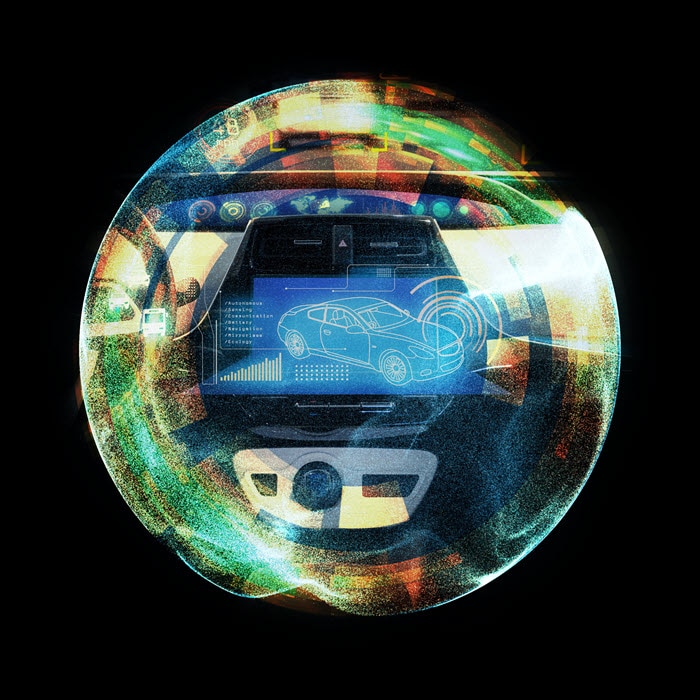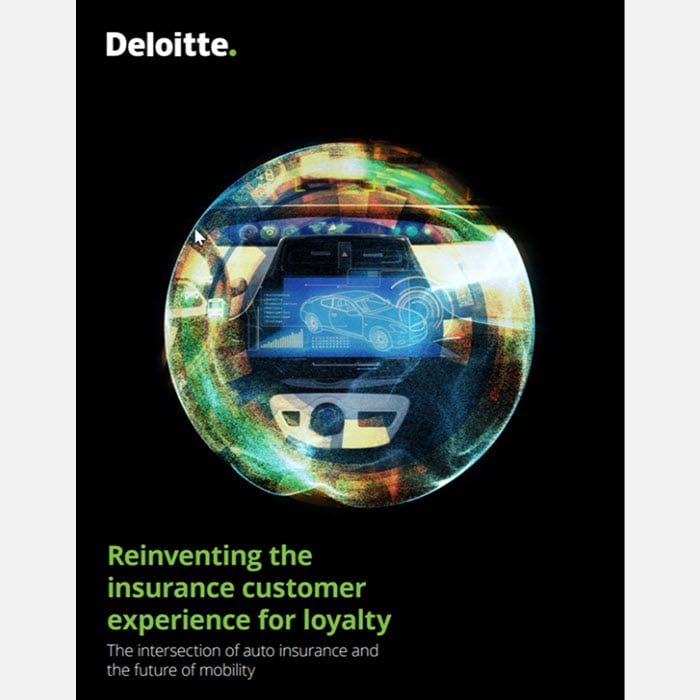Reinventing insurance customer experience for loyalty has been saved

News
Reinventing insurance customer experience for loyalty
Collaborating on the auto insurance customer life cycle
OEMs are facing eroding loyalty, and the auto insurance customer experience is one big reason. It also represents an opportunity. Learn why collaboration among OEMs, insurers, and captives is the path toward drawing in and keeping customers. Explore four OEM–insurer partnership archetypes and learn which companies are already collaborating.
Declining customer loyalty—and the opportunity to create a seamless insurance customer journey
Congratulations! You’ve just bought a car. Prices haggled, papers signed, hands shaken. But don’t get too comfortable basking in “new car smell”—you still have to sort out your insurance. Instead of driving right off the lot, it’s not unusual to spend half a day at the dealer orchestrating insurance and financing transactions.
The fragmented auto insurance customer experience is only one of many kinks in the value chain that prevent original equipment manufacturers (OEMs) from locking in customer loyalty—which reached an eight-year low in 2023.
But this also represents an opportunity: By spearheading partnership around a more seamless insurance customer journey, OEMs and their captives could create a mutually beneficial relationship with insurers and customers to build loyalty, boost profitability, and define the future to secure competitive advantage—before electric and autonomous vehicles force change upon the industry at large.

Automated driving: The elephant in the garage for the insurance customer experience
On top of declining loyalty, the future of mobility raises considerable implications for auto insurance and liability. If OEMs, captives, and insurers don’t start collaborating around a new insurance customer experience now, they could risk taking a backseat to regulators, new market entrants, and competitors.
Based on the International Energy Agency’s (IEA) Stated Policies Scenario in its Global EV outlook 2024, every other car sold globally in 2035 is set to be electric, given today’s energy, climate, and industrial policy settings.1 From 2022 to 2023, permitted autonomous vehicles in California test-drove a record 9 million miles, more than a third of which were driverless, according to the California Department of Motor Vehicles.2
From there, it’s easy to see a future where most cars are fully electric and autonomous, as car companies continue to strive toward what General Motors coined as a “zero crashes, zero emissions, and zero congestion” world.3 Once highways are filled with autonomous cars, human-operated cars will likely go the way of the horse-and-buggy.
Joining the mobility–insurance value chain now could give OEMs, captives, and carriers a chance to dictate how change happens and secure market share and competitive advantage as the future of mobility unfolds.
Other forces of change
${column1-large-text}
New market entrants
In any customer experience, if you don’t solve the points of friction, someone else will. Entering the automotive value chain are several unusual players, including the likes of NVIDIA and CISCO to improve in-cabin and connected experiences across the vehicle and customer life cycles.
${column2-large-text}
More cost-effective electric vehicles
As more people adopt electric vehicles (EVs), customer expectations for connected experiences will likely rise as a result. OEMs have an opportunity to captivate early adopters within their walled gardens.
${column3-large-text}
Data ethics and consumer trust
While EVs can generate thousands of data points about customer behavior per second, the New York Times states there is increased scrutiny around the ethics of collecting and sharing that data. OEMs, captives, and insurers need to prioritize the ethical treatment of data-sharing as a foundational element of insurance customer experience transformation.
${column4-large-text}
${column4-title}

Focus on the entire insurance customer life cycle: Building a ‘walled garden’ experience
To recapture loyalty and stay competitive, OEMs should seek to create a cradle-to-grave loyalty experience with each car—a walled garden of helpful services and interactions that span multiple customer and asset life cycles to keep people within the brand ecosystem. The payoff? Increased customer lifetime value and profitability: Research by Deloitte shows that managing a vehicle asset across multiple life cycles can be 1.4 to 1.6 times more profitable than the traditional one-time sales model.4
Collaboration: A pathway to loyalty
To offer customers a seamless and compelling experience across their life cycles, OEMs, captives, dealers, and carriers should consider integrating personalized insurance offerings into a set of streamlined purchase, leasing, and repair processes that incent customers to stay within the brand. Collaboration could allow insurers, OEMs, and captives to banish pain points and invent new, desirable outcomes for customers—effectively building a one-stop shop through undeniable convenience.
What auto insurance customers want from the journey

${column1-large-text}
Convenient, personalized, end-to-end experiences. Think one-stop shopping, flexible payment plans, and rewards.

${column2-large-text}
Flexibility and cost-savings amid increasing prices and interest rates.Think subscription models and bundled in-life services (e.g., maintenance and accident management).
${column3-large-text}
${column3-title}
${column4-large-text}
${column4-title}
${header-title}
1 in 3
1 in 3
US consumers are interested in purchasing “embedded” insurance directly from the manufacturer, citing cost, convenience, and streamlined purchasing as primary benefits—with even greater interest globally.5
60%
60%
Of US consumers want connected vehicle features such as maintenance updates and vehicle health reporting, with similar levels of interest in safer routing, collision prevention, and maintenance forecasts based on driving habits.6
+26%
+26%
Amount that full-coverage auto insurance rose from 2023 to 2024, according to Bankrate,7 further driving consumers to seek cost savings.
${column4-large-text}
${column4-title}

More collaboration, more wins
Download the full report for a detailed exploration of opportunities
See three steps to reconsider the auto insurance customer experience, and read about the partnerships between Rivian and Nationwide, Toyota and Farmers, and GM vehicles with GM Insurance Services.
1 International Energy Agency (IEA), Global EV outlook 2024, 2024.
2 California Department of Motor Vehicles (DMV), “Autonomous vehicle permit holders report a record 9 million test miles in California in 12 months,” press release, February 2, 2024.
3 General Motors (GM), “It’s time for American leadership in zero emissions vehicles,” accessed June 5, 2024.
4 Sebastian Pfeifle et al., The future of automotive mobility to 2035: What might mobility providers’ role be in tomorrow’s value chain?, Deloitte, 2023.
5 Harold Proff et al., 2024 Global Automotive Consumer Study, Deloitte, January 2024; J.D. Power, “Half of auto insurance customers currently shopping for new policies, J.D. Power finds,” press release, April 30, 2024.
6 Proff et al., 2024 Global Automotive Consumer Study.
7 Shannon Martin, Annual report: The true cost of auto insurance in 2024, Bankrate, 2024.
Get in touch

Dilip Kotlapati
Senior Manager
Embedded insurance solution owner
Deloitte Consulting LLP
Recommendations
Reimagining reinsurance strategies
How a changing landscape is making waves
The path ahead for the auto insurance market
Analyzing shifts within the auto industry post-COVID






